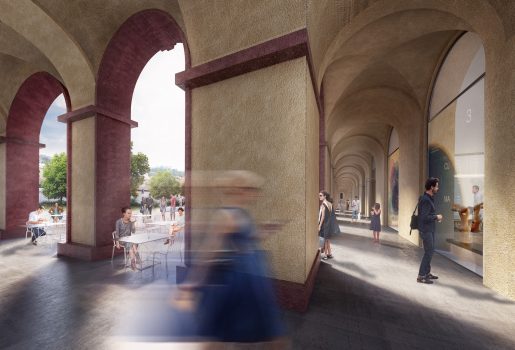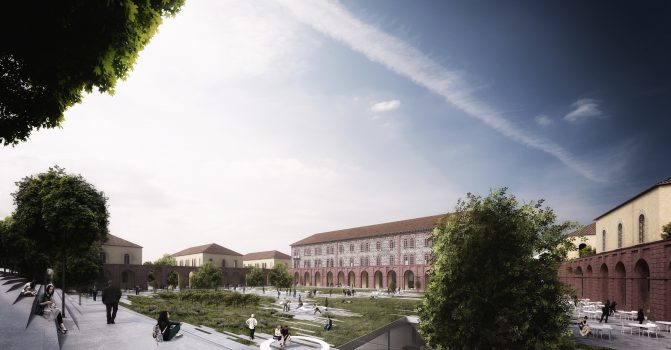Carlo Ratti Associati has started the renovation of a former 19th century military complex in Turin, Italy, that will turn the site into a testing ground for an open-source approach to architecture. The project extends across a 20,000 square-meter (200,000 square-foot) area called Caserma Lamarmora, owned by Italian state fund Cassa Depositi e Prestiti (CDP). The design offers a fresh take on the barracks’ characteristic modular structure, which will be updated and reimagined to welcome a new mix of functions for co-living, co-making and co-working: from labs for Makers to residences for students and locals. The site development encourages bottom-up growth, without imposing any fixed notions of how the space should be used.
The vacant Caserma Lamarmora complex, named after a general who fought for Italian Unification in the 1840s, is composed of a porticoed main building and six smaller barracks. Each of these edifices reveals a common structure, based on an arch-shaped unit of approximately 80 square meters. With its design, Carlo Ratti Associati enhances the modular character of the building, opening it up to multiple uses which will ultimately be determined by its future occupants, in accordance with open-source principles. The complex boasts more than 150 units, allowing for a lively, ever-changing overlapping of functions.
“This project does not dictate how people should use the space – rather it allows the space to evolve organically, through a continuous process of renewal, improvement and adaptation of individual spaces,” says Carlo Ratti, professor at MIT in Boston and founding partner of Carlo Ratti Associati: “To borrow Dutch theorist John Habraken’s metaphor, our design provides the structure and the technical foundation, but the actual infill will be up to the inhabitants. We believe that such a hybrid approach is crucial to achieve a true user-driven, open-source approach* to the built environment.”
The renovation will also help to rejuvenate the vast area between the buildings, currently hidden behind a walled structure. This will allow for the creation of a new 100-meter long, 60-meter wide public square, accessible via a large flight of steps, that will be an ideal location for events and performances. The project will thus give Turin an iconic new public space, similar in scope to Piazza Vittorio Veneto, Turin’s best-known landmark as well as one of Italy’s largest squares.
The Caserma Lamarmora is part of a global trend of the past few decades involving the transformation of former military installations into more imaginative and humane structures.
Other examples that have been at the core of urban regeneration schemes include Hong Kong’s Victoria Barracks, Singapore’s Dempsey Hill and London’s Chelsea Barracks. Locally, the project aims to establish a new community made up of local residents, students and temporary workers, and digital manufacturing laboratories.



